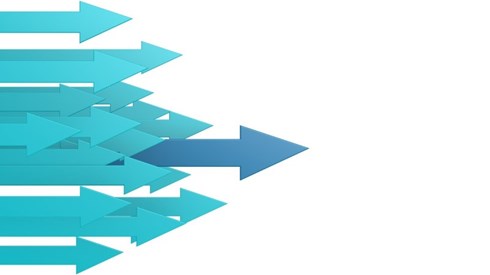Hard Market Increases Challenges, Opportunities for Risk Managers

November 08, 2021

The hard commercial insurance market is challenging organizations as well as their risk managers as they look to address increasing premiums, reduced capacity, and insurers' desire to increase deductibles.
In response to those market conditions, organizations are rethinking their risk financing strategies, including increased use of captive insurance.
Speaking at a recent FERMA Talks session presented by the Federation of European Risk Management Associations (FERMA), two risk managers discussed the impact of current market conditions and some of the ways their companies are responding.
"The situation that we are facing is very complex and challenging," said Carlo Cosimi, head of corporate insurance and risk financing at multinational oil field services company Saipem and president of ANRA, the Italian risk management association.
Among the challenges posed by the hard market, according to Mr. Cosimi, are less available insurance capacity, more requests from insurers to increase deductibles, the potential for more litigation over claims, and strong rate increases. The hard market hit all lines of insurance coverages, but directors and officers (D&O) liability and cyber risk were affected more than others, he said.
Mr. Cosimi said his company faced a triple-digit increase in its D&O premiums, along with reduced capacity. And, during the most recent renewal, while it was typical to see coverage offered in the excess layer, capacity was less available in the primary layer, he said.
Mario Ramirez Ortuzar, risk and assets manager at Madrid-based liquid products logistics company Exolum and vice president of AGERS, the Spanish risk management association, described a similar scenario.
"The situation is very tough," Mr. Ortuzar said. That is despite the fact that his company has been managing its risks correctly and controlling its loss frequency, communicating those risk mitigation efforts to insurers, and has remained a profitable account, he said.
The current market also creates a challenge for risk managers in communicating market conditions within the organization, Mr. Ortuzar said.
"With this new trend, everything has changed and it's very difficult for us to explain internally how we deal with this situation of continuous increasing of premiums," he said.
Mr. Cosimi said the commercial market conditions have led to "strong discussion internally" at his organization, involving top management, the company's risk control committee, the audit group, and various other functions within the organization.
"The result of this discussion was to increase the support of our captive," he said. Saipem has had a captive insurance company for 14 years, and, as a result of their discussions about insurance market conditions, top management directed Mr. Cosimi to increase the use of the captive in the company's risk financing. In response, Saipem is increasing the coverage per loss in its captive insurance company at its next insurance renewal.
Mr. Ortuzar said his company has changed its risk financing strategy in response to market conditions. It's increasing deductibles and buying lower limits for some coverages.
"We are buying less limits in certain coverages. We are in a situation now where we are not going to pay any price for certain limits," Mr. Ortuzar said. Now, Exolum will assess exactly what limits the company needs and purchase only that amount.
"We went to the last renewal analyzing how to increase our deductibles," Mr. Ortuzar said. "We didn't achieve big reductions from the market so we kept them as they are for this year." But prior to their next renewal in July 2022, the company is reassessing its risk appetite.
"It's a very amazing discussion we are having internally to analyze every risk, what capacity we have internally to retain a portion of risk," Mr. Ortuzar said. "What we are figuring out is that we need to retain a very big amount to really achieve reductions from the market and to send the market a message that we are sharing the risk with them."
Once a company decides to retain a larger amount of risk, it has options including captive insurance or other alternative risk transfer vehicles, in addition to just self-insured retentions, Mr. Ortuzar said.
His company has the ability to retain large amounts of risk, but Mr. Ortuzar said he worries about small and midsized companies, some of which he believes are choosing not to purchase some coverages due to market conditions.
As challenging as the hard market is, it does offer risk managers an opportunity to raise their profiles in their organizations, the panelists suggested.
"The change from soft to hard market was very fast and was boosted by the pandemic crisis," Mr. Cosimi said. But, during the extended soft market, many risk managers were viewed simply as insurance purchasers in their organizations, he said. Now, hard market conditions provide an opportunity for risk managers to help their organizations address the challenges, increasing their visibility.
Mr. Ortuzar said the hard market also provides an opportunity to reinforce relationships with insurance market partners.
"In the soft market, we used to do four or five site visits with our insurers to our facilities," he said. "Now we are increasing the number of those site visits."
Those site visits also provide an opportunity for the risk manager to demonstrate internally how they are dealing with risks, and the strength of the company's risk management program, Mr. Ortuzar said.
Mr. Ortuzar said he expects the market to turn and grow more competitive within the next few years, but he doesn't necessarily expect the sort of soft market that preceded the current hard market. He worries about the impact of emerging risks.
"Pandemic is something that insurers cannot deal with alone," Mr. Ortuzar said. Addressing pandemic risk will probably take a combination of private insurers and governments working together to deliver solutions, he said.
"The other big hole that we are facing is cyber risk. I honestly think that in the future it is going to be very difficult for the insurance market to deal with this risk," Mr. Ortuzar said. "So we need to look internally for other solutions, and have support from brokers and insurers to deal with it. But I think in several years the risk is going to become so huge that we won't be able to deal with it."
Mr. Cosimi said he believes the insurance industry must evolve to offer buyers more tailor-made solutions. Those solutions could be based on either traditional risk transfer or alternative risk transfer vehicles, he said.
"Because we are facing new emerging risks like reputational risks, like cyber risks, for which today we do not have a standard worded form, we can see different wording from different insurers," Mr. Cosimi said.
"Also, we need new solutions for supply chain risks," he said. It's important for businesses to find protection for commodity price volatility, possibly through derivative products offered as insurance solutions through the insurance market, Mr. Cosimi said.
Businesses also need to find protection from the economic impacts of vendor delays that could slow or interrupt business activity, he said. "Today we are not able to find proper tailor-made solutions to reduce this impact on the supply chain," Mr. Cosimi said.
November 08, 2021






